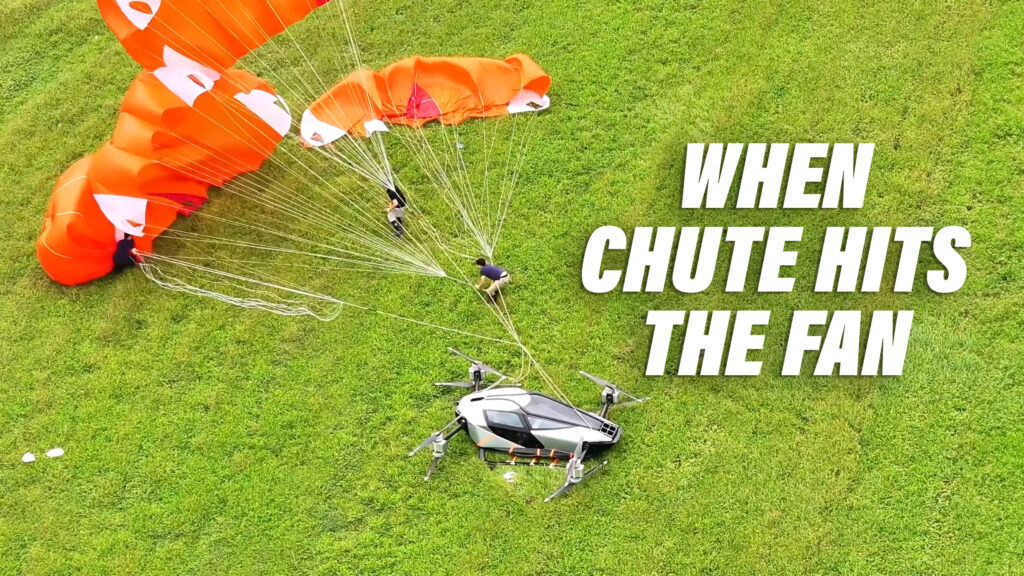Xpeng AeroHT has some high-flying goals for the future and now it has a way to keep passengers safe if one of them doesn’t work out. It’s just introduced a new multi-parachute rescue system for flying cars. The system is beyond the pre-development stage and is already the subject of full sale in-air testing.
Flying cars are seemingly everywhere and nowhere all at once. Companies from around the globe have debuted flying car concepts and some flying car prototypes. Xpeng AeroHT is no different and has introduced two flying car concepts that both act like real-life transformers.
One question that still awaits an answer is what happens when a flying car has an emergency while it’s still in the air. Xpeng AeroHT believes its new multi-parachute safety system could be the solution. It even released a video of full-scale in-air testing of the parachutes.
More: Porsche Design Boss Says Chinese Startups Will Force German Styling To Be More Daring
In that film we see an eVTOL craft hovering roughly 165 feet (50 m) in the air before parachute deployment. A panel at the front of the craft is blown off with a small pyrotechnic charge and the parachutes fly up into the sky above. They’re attached to the craft via a single point at the center of the body that then extends down to each corner.
While it appears that the initial shock of the parachute’s gathering lift could be jarring, there’s no question that the craft descends far slower than if it had simply fallen out of the sky. Xpeng AeroHT says that the craft in the test landed at 5.2 m/s or about 17 feet per second which is certainly survivable inside of the craft.
Whether or not flying cars ever actually take off is still yet to be seen. One thing is for sure though, the technology to keep those crafts safe is already well under development.




